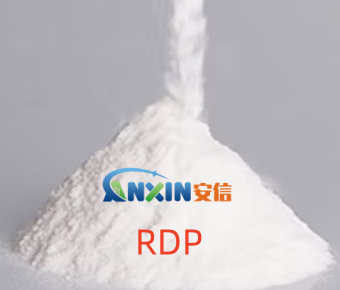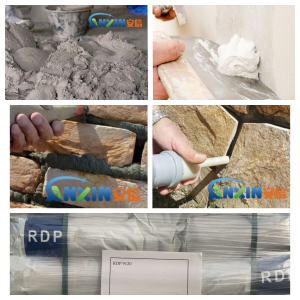Redispersible polymer powders (RDP) are free-flowing, dry powders obtained from water-based polymer dispersions. They can be easily rehydrated in water to form a stable dispersion with properties similar to the original liquid polymer. This makes RDPs widely used in dry-mix building materials such as tile adhesives, repair mortars, plasters, and self-leveling compounds.
The production of RDPs involves carefully selecting the polymer base, stabilizers, and additives, followed by spray-drying under controlled conditions. The aim is to retain the original polymer’s performance while ensuring excellent redispersibility.
1. Selection of Polymer Base
The first step is choosing the right type of polymer emulsion, which will define the RDP’s performance in final applications. Common choices include:
Vinyl Acetate–Ethylene (VAE) Copolymers – Excellent adhesion, flexibility, and workability; widely used in cementitious products.
Vinyl Acetate–Acrylic Copolymers – Better UV and weather resistance; suitable for exterior applications.
Styrene–Butadiene Rubber (SBR) Copolymers – Good water resistance and bonding to various substrates.
Pure Acrylic Polymers – Superior weatherability and durability.
The polymer is produced via emulsion polymerization, resulting in an aqueous dispersion of polymer particles (generally 40–60% solids content). This liquid form is the starting point for RDP production.
2. Addition of Protective Colloids
To enable redispersion after drying, a protective colloid—most commonly polyvinyl alcohol (PVOH)—is added to the polymer dispersion.
Functions of the protective colloid:
Prevents polymer particles from coalescing during drying.
Stabilizes the particles in water during redispersion.
Improves storage stability of the powder.
The PVOH is dissolved in water and mixed with the polymer dispersion in precise proportions. The choice of PVOH grade (degree of hydrolysis and viscosity) affects the RDP’s performance in terms of water retention, open time, and adhesion.
3. Incorporation of Anti-blocking Agents
Without additional measures, dried polymer particles tend to stick together due to their thermoplastic nature. To prevent this, anti-blocking agents (also called anti-caking agents) are added。
Common examples:
Mineral fillers such as talc, kaolin, or calcium carbonate.
Silica powders (amorphous silica is common).
These agents coat the surface of the polymer particles during drying, reducing tackiness and ensuring the powder remains free-flowing during storage and transport.
4. Pre-spray Drying Preparation
Before spray drying, the modified polymer dispersion undergoes several preparatory steps:
Filtration – Removes any coagulated polymer lumps or impurities.
Homogenization – Ensures even distribution of the protective colloid and anti-blocking agents.
Concentration Adjustment – Solids content may be adjusted (typically 40–50%) for optimal drying performance.
5. Spray Drying Process
The core step in RDP production is spray drying, which converts the liquid dispersion into fine powder. The process is as follows:
5.1. Atomization
The liquid feed is pumped into a spray dryer and atomized into fine droplets using one of two methods:
Rotary atomizer (spinning disk) – Produces uniform droplets.
Nozzle atomizer (pressure or two-fluid nozzle) – Uses compressed air or high pressure to break the liquid into droplets.
5.2. Hot Air Contact
The droplets are immediately exposed to hot air (inlet temperature typically 120–180 °C). Rapid water evaporation occurs, and the polymer particles become encapsulated with the protective colloid and anti-blocking agent.
5.3. Drying & Separation
Within a few seconds, the moisture content drops to around 0.5–1%. The dry particles are carried by the airflow into a cyclone separator or bag filter, where they are collected.
5.4. Cooling & Screening
The powder is cooled to prevent agglomeration, then passed through a sieve to remove oversized particles.
6. Packaging & Storage
The finished RDP is packed in multi-layer paper bags with PE liners or moisture-proof valve bags to protect against humidity. Typical packaging sizes are 20–25 kg bags. Storage should be in cool, dry conditions, as moisture can cause caking and loss of redispersibility.
7. Key Process Parameters and Their Impact
The performance of the RDP depends heavily on process control:
Drying temperature – Too high can cause polymer film formation before redispersion; too low can leave excessive moisture.
Protective colloid content – Too little causes poor redispersion; too much may reduce water resistance.
Anti-blocking dosage – Insufficient levels cause caking; excessive levels dilute polymer content.
Particle size – Finer particles disperse faster but may dust more during handling.
8. Quality Control Tests
Before shipment, RDP batches are tested for:
Moisture content
Bulk density
Particle size distribution
Redispersibility in water
Ash content (linked to anti-blocking agent amount)
pH value
Performance in standard mortar formulations
9. Advantages of RDP Production via Spray Drying
Spray drying is preferred for RDP production because it:
Retains the original polymer’s properties.
Produces free-flowing, easily handled powders.
Allows for precise control over particle size and moisture content.
Enables large-scale, continuous production.
10. Environmental and Safety Considerations
Modern RDP plants incorporate:
Closed-loop hot air systems to recover heat and reduce emissions.
Dust collection systems to minimize airborne particles.
Automated feeding and packaging to protect operators from dust exposure.
The protective colloids and mineral agents used are generally safe, but polymer dust can be a mild irritant, so dust masks and ventilation are standard.
The production of RDP is a highly engineered process involving emulsion polymerization, protective colloid addition, spray drying, and precise process control. Each step—from selecting the polymer base to optimizing drying conditions—directly influences the final powder’s redispersibility, storage stability, and performance in end-use applications.
Post time: Aug-12-2025








